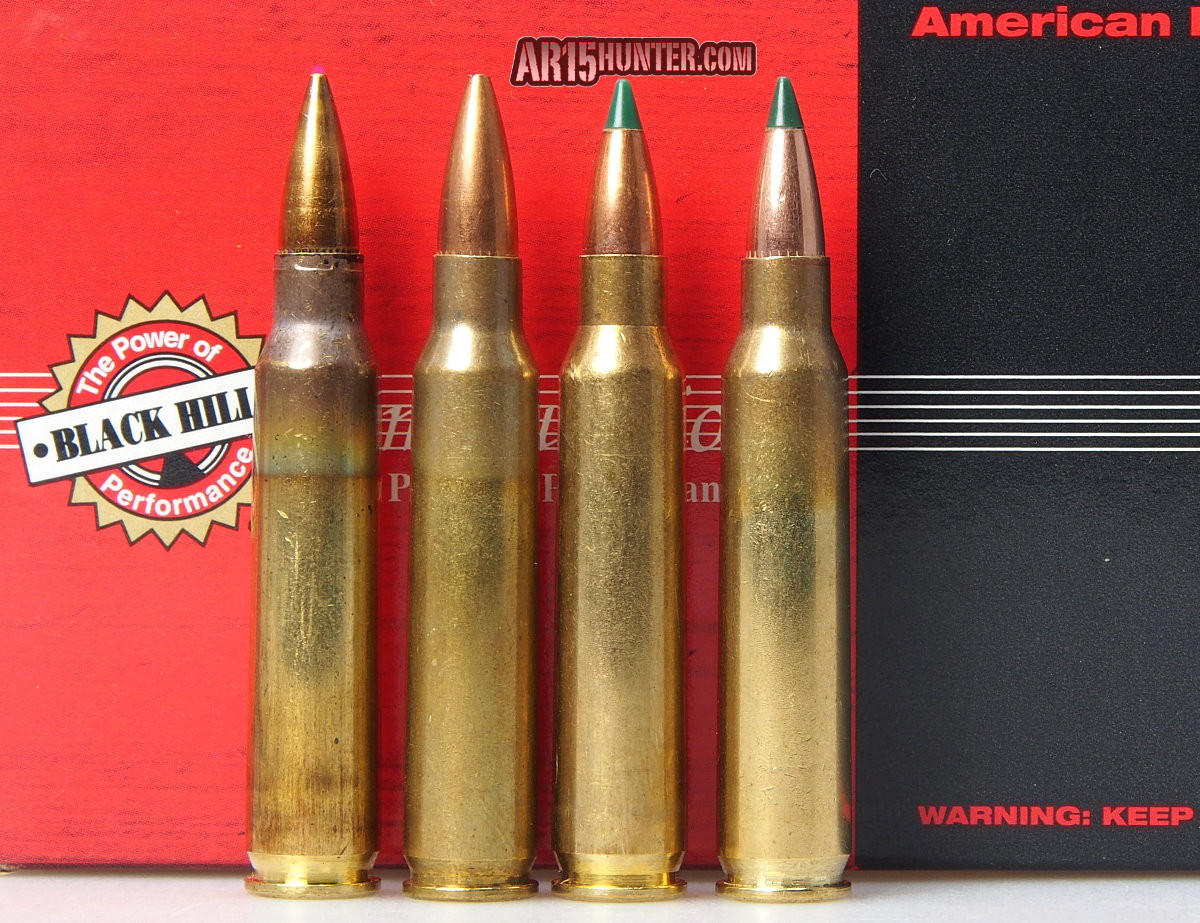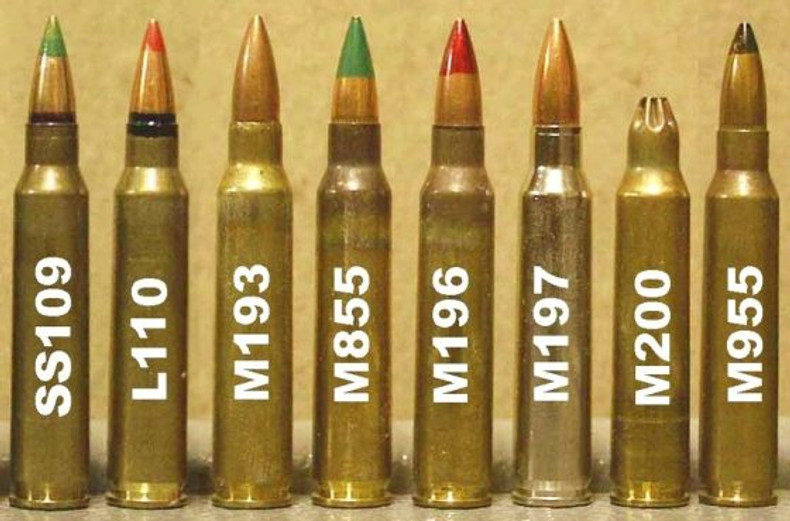5.56 NATO & .223 Rem: The Ultimate Guide - Avoid Mistakes!
Is there a critical difference between a 5.56x45mm NATO cartridge and a .223 Remington round? The reality is that while they appear nearly identical and are often discussed interchangeably, these two rounds have distinct specifications that can significantly impact the performance and safety of your firearm.
The world of firearms is filled with nuances that often bewilder newcomers. Among the most common sources of confusion are the seemingly similar, yet fundamentally different, .223 Remington and 5.56x45mm NATO rounds. Both are rimless, bottlenecked rifle cartridges that share a similar appearance, making it difficult for the untrained eye to distinguish between the two. However, the subtle differences in their specifications are crucial, potentially affecting a rifle's accuracy, performance, and, most importantly, safety. These cartridges are not merely "the same dance partner with a different dress" as some might believe; their variances can lead to dangerous situations if not properly understood.
To fully grasp the distinctions, let's delve into the origins and specifications of these cartridges. The 5.56 cartridge, as it's commonly referred to, traces its roots back to the .223 Remington, a commercial cartridge developed in the late 1950s. This initial design served as the foundation for the 5.56x45mm NATO round, which was adopted by the U.S. military in the 1960s. The .223 Remington was introduced to the commercial market in 1964, and subsequently, the 5.56 NATO was standardized for use in the new M16 rifles.
The 5.56x45mm NATO cartridge, born from the .223 Remington, quickly became a staple in military applications. It boasts an effective range of approximately 300 meters (980 feet) and is known for its ability to penetrate body armor. Early specifications for the 5.56mm rounds were centered around the M193 cartridge, which was the same as the civilian cartridge at that time, employing a 55-grain projectile loaded to a pressure of 55,000 psi. This configuration was, in essence, a stepping stone to the advancements that would come.
The evolution of the 5.56x45mm NATO was not without its trials and tribulations. The development of the round was influenced heavily by the NATO trials, which placed a particular emphasis on the cartridge's ability to penetrate a Soviet helmet at 400 meters. This requirement pushed the development of the round and eventually shaped its current form and capabilities.
Here is a detailed overview to understand the differences in the cartridges.
| Feature | .223 Remington | 5.56x45mm NATO |
|---|---|---|
| Pressure | SAMMI spec: 55,000 PSI | NATO spec: ~62,000 PSI |
| Chamber Dimensions | Slightly tighter | Slightly larger |
| Bullet Weight | Variable, typically lighter | Variable, including heavier options |
| Use Case | Sporting, hunting | Military and tactical |
The crucial difference lies in the chamber dimensions and pressure specifications. The 5.56x45mm NATO round operates at higher pressures than the .223 Remington, necessitating slightly larger chamber dimensions. This higher pressure is a key factor in the increased penetration capabilities of the 5.56 round. Specifically, 5.56mm NATO ammunition has consistently been loaded to roughly 62,000 psi, while the .223 Remington, according to SAMMI specifications, maxes out at 55,000 psi. This difference, though seemingly small, can have significant consequences when it comes to compatibility.
The practical implications of these differences become apparent when considering interchangeability. While a .223 Remington cartridge can generally be fired safely in a rifle chambered for 5.56x45mm NATO, the reverse is not always true. Firing a 5.56x45mm NATO round in a rifle designed for .223 Remington can lead to excessive pressure, potentially causing malfunctions, accuracy issues, or even catastrophic failure of the firearm. The tighter chamber of the .223 Remington rifle, combined with the higher pressures generated by the 5.56 round, creates a dangerous scenario.
Many gun owners find themselves pondering the exact dimensions, and the conversion between millimeters and inches. It's crucial to be precise in these measurements to avoid confusion and ensure the proper functioning of your equipment. To illustrate, consider the common conversion: how many inches are in 5.56 millimeters? The answer is that 5.56 millimeters is equal to approximately 0.219 inches. This conversion is based on the fundamental relationship: 1 inch equals 25.4 millimeters. Therefore, to convert from millimeters to inches, divide the millimeter value by 25.4. This simple calculation underlines the necessity for precision in measurement, especially in fields where tolerances are so crucial.
One must also consider the technical specifications of the ammunition. The 5.56mm NATO round commonly utilizes a 62-grain full metal jacket (FMJ) bullet. This bullet, when fired, delivers a muzzle energy of approximately 1289 foot-pounds, resulting in significant stopping power and penetration, particularly against soft tissue. The muzzle velocity, which can vary depending on the barrel length, plays a key role in the projectile's trajectory and effective range. The accuracy and ballistic characteristics of these rounds are of paramount importance for tactical applications.
The importance of understanding the correct ammunition for your firearm cannot be overstressed. If you were to examine a 5.56 NATO cartridge and a .223 Remington round side-by-side, it would likely be difficult to discern any significant differences without examining the headstamp. However, the slight variances in pressure specifications and chamber dimensions, as well as in bullet weight, can have a major impact on performance, accuracy, and safety. The critical point is that one should always prioritize the appropriate ammunition for the firearm to avoid potential harm or malfunctioning.
In the world of ammunition, the 5.56x45mm NATO cartridge stands as a testament to continuous innovation. It has evolved over time to meet the demands of modern warfare and military applications. However, the differences, subtle as they are, between it and its civilian counterpart, the .223 Remington, emphasize the need for precision, knowledge, and responsible gun ownership. Understanding the intricacies of the 5.56 round and its relationship with the .223 Remington is the first step in safe and effective firearms handling.
In practical terms, the 5.56x45mm NATO cartridge with the standard 62 gr M855 projectile will penetrate approximately 15 to 20 inches (38 to 51 cm) into soft tissue under optimal circumstances. This capability highlights the effectiveness of this ammunition type. The ability of these rounds to fulfill their roles is determined by a lot of things, including their pressure, chamber dimensions, and bullet weight. This is also why the careful selection and application of the 5.56 round are so important.
The availability and use of certain types of 5.56 ammunition also vary. It can be very difficult to find M855A1 ammunition because it is an armor-piercing type and is therefore subject to restricted sales. This highlights the regulations concerning ammunition use and availability, which aim to prevent misuse and promote safety.
Here is a guide to ammunition calibers and their imperial or metric sizing, including detailed data for 5.56x45mm NATO cartridges. It's essential to consult such guides to ensure that the ammunition you're using is suitable for your firearm. The safe and proper usage of firearms demands a clear understanding of the ammunition involved, which, in turn, calls for being well-informed and using reliable data sources.
To convert from millimeters to inches, you divide the length value in millimeters by 25.4. So, 10 millimeters, when converted, equals 0.3937 inches. The resulting fraction of inches may then be rounded to the 1/64th of an inch resolution, for precision.
There are several conversion tools available online, which offer an instant and free method to change from millimeters to inches or vice-versa. These tools, together with conversion charts that show the steps involved in the conversion, are valuable resources for gun owners.
The 5.56 cartridge originated in the late 1950s as a result of the U.S. military's quest for a new small-caliber rifle. The result of this research was the .223 Remington round, which went on to be adopted as a standardized military round. This evolution also emphasizes the importance of research in firearms technology.
Remember that, in the world of firearms, the difference between success and a potential safety hazard often lies in seemingly small details. The .223 Remington and 5.56x45mm NATO cartridges are a reminder of the necessity of knowledge, accuracy, and responsibility.


